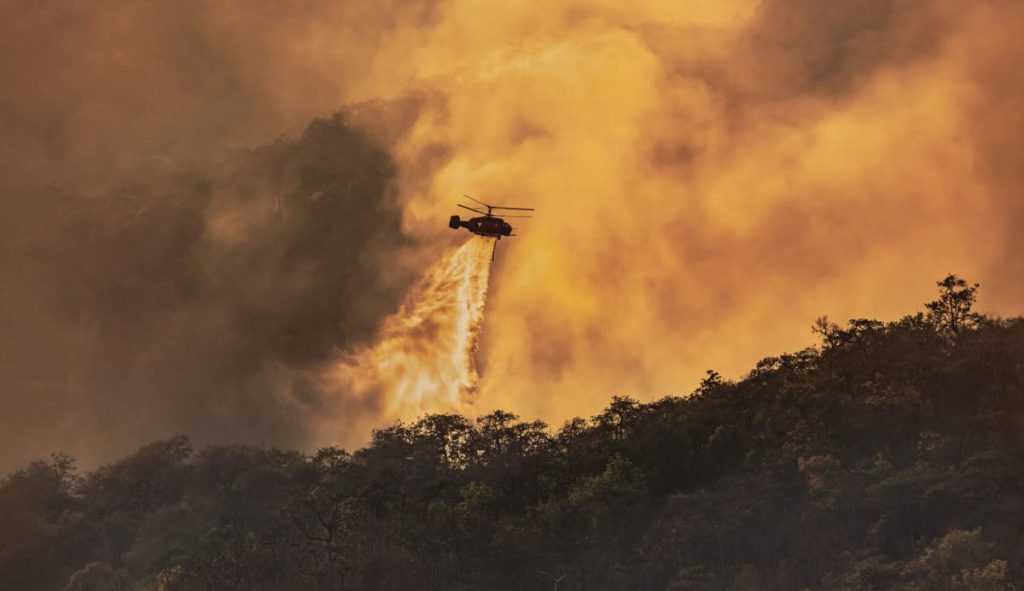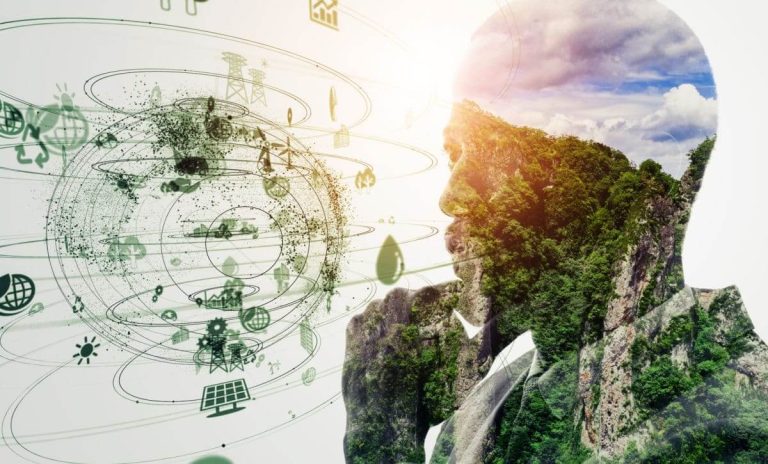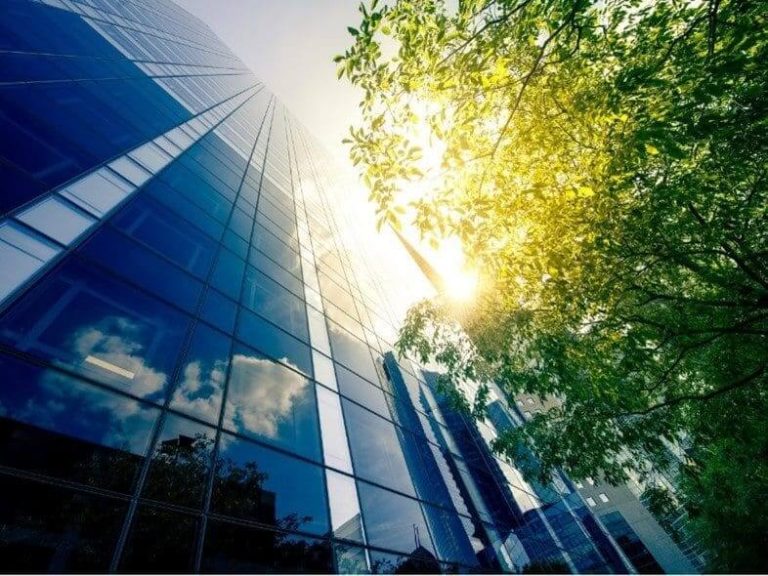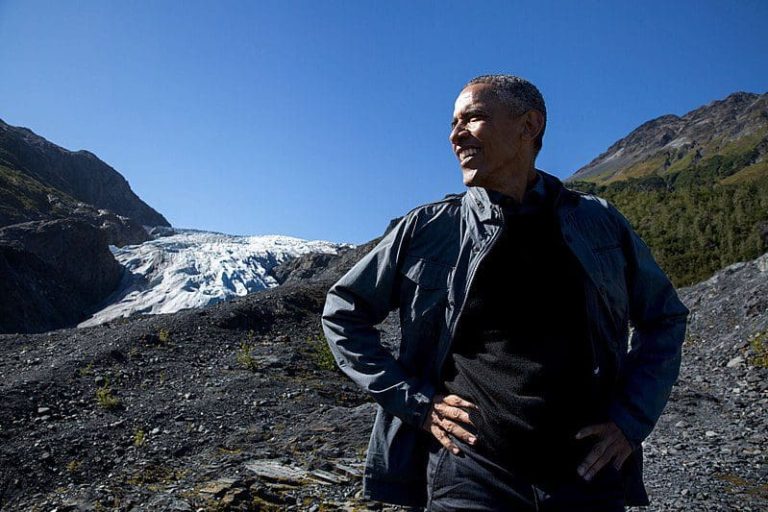
If you check the news in any given summer, you’ll probably see reports of a wildfire somewhere in the US West—and maybe more than one. If you’ve ever lived in that part of the country, you know the anxiety that a forest fire can cause, not to mention the damage to ecosystems and shelter and even loss of life.
You may have a feeling that wildfires seem to be getting worse. They seem bigger and more out of control than before, and there seem to be more of them. If so, your feeling is correct. That’s exactly what’s happening.
It’s important to ask why this is happening. Even more important is what we can do as a society and as individuals to fight back against this trend.
Causes of Wildfires
Lightning
 Wildland fire is a natural occurrence that has been happening throughout many ecosystems for millennia. And the near-universal cause of this kind of forest fire is lightning. (Given enough intensity and dry enough conditions, even heat from the sun can cause a spark. But for this to create a full-fledged forest fire is extremely rare.) When the conditions are right—namely, plenty of dry vegetation in the vicinity of a lightning strike—a wildfire can begin.
Wildland fire is a natural occurrence that has been happening throughout many ecosystems for millennia. And the near-universal cause of this kind of forest fire is lightning. (Given enough intensity and dry enough conditions, even heat from the sun can cause a spark. But for this to create a full-fledged forest fire is extremely rare.) When the conditions are right—namely, plenty of dry vegetation in the vicinity of a lightning strike—a wildfire can begin.
Not all lightning is the same, and not all lightning storms carry the same likelihood of starting a fire. The most brilliant forms of lighting, those quick, powerful flashes that shake your house, are cold lightning and are unlikely to start a wildland fire due to their short duration.
It’s actually the slower but hotter forms of lightning that are prone to wildfires. This kind of hot lightning has lower voltage but longer duration, and that sustained activity is what leads to most natural wildfires.
It’s worth noting that not every wildfire is a problem. Wildland fire is a natural part of the ecosystem, and there are types of plants that cannot truly thrive without occasional burns. But when these fires burn out of control and threaten human populations, they can become extremely dangerous and costly.
Human Activity
 According to data from the National Parks Service, nearly 85% of wildfires were caused by human activity in the period spanning 2000 through 2017. This statistic reveals some, but not all, of the reasons that wildfires are increasing in frequency. People continue to make careless mistakes and even occasionally set intentional fires in acts of arson.
According to data from the National Parks Service, nearly 85% of wildfires were caused by human activity in the period spanning 2000 through 2017. This statistic reveals some, but not all, of the reasons that wildfires are increasing in frequency. People continue to make careless mistakes and even occasionally set intentional fires in acts of arson.
Policy alone won’t reduce arson, of course, but a combination of policy and common sense can reduce risks associated with careless human activity.
Some of the human causes of forest fire seem almost cliché, but they’re real: unattended campfires; unextinguished cigarettes; burning brush, trash or debris; equipment malfunction. Each of these types of mistakes is responsible for a significant number of wildfires.
In addition to the ways humans misuse fire or combustible elements, humans also contribute to the increase in wildfires due to the way they inhabit land. Even in especially fire-prone areas, humans don’t tend to build property in a way that is fire resistant.
Houses are built close together, natural vegetation is cleared in favor of fire-spreading ornamental vegetation, and natural buffers are removed.
Urban sprawl is another consideration. Areas near forests are considered desirable locations in which to live, so humans keep building on the edges of natural forests. But these are also the areas that will eventually burn naturally. By developing homes and businesses near these areas, humans have turned harmless natural fires into ones that threaten people and property.

Electrical Grid
 Recent high-profile fires in California have been blamed on problems with the electrical grid. The big ones make the national news, but there are plenty of smaller ones, as well. In fact, one California utility is allegedly responsible for over 1500 wildfires in the span of just six years.
Recent high-profile fires in California have been blamed on problems with the electrical grid. The big ones make the national news, but there are plenty of smaller ones, as well. In fact, one California utility is allegedly responsible for over 1500 wildfires in the span of just six years.
Overhead power lines can be especially dangerous when they run through areas full of dry vegetation. Electrical grid risks increase greatly when companies continue to rely on damaged or out-of-date equipment, as well.
Why Wildfires Are Increasing in Frequency
Without question, wildfires have increased in both frequency and intensity over the past decade or two. But why is this the case?
It’s not as simple as increased human activity and errors. If anything, people are more aware now than ever before not to leave an unattended campfire, and there are fewer smokers than at any point in recent history.
There’s more going on than human activity. Climate change is the easy and obvious answer, but there’s more to explore on this topic.
Climate Change Is More Than Hotter Temperatures
First, climate change is more than just hotter temperatures. There are observable changes happening that go beyond how hot it is on a given day, and it’s this more complex picture that explains the increase in the frequency of wildfires and forest fire.
In fire-prone areas, slightly increased temperatures seem to have had an effect on moisture levels. At times, less precipitation falls in winter, leading to dryer conditions overall. In some places, extra precipitation leads to more vegetation growth, but this growth dries out during the hot and dry season, creating more fuel for the wildfires.
In the western USA, the drought season is more or less controlled by mountain snow melt (when it happens and how much of it there is). As temperatures rise—even slightly—the snow melts sooner in the year, and drought season starts earlier.
Fires Beget Fires
Another problem we’re seeing is the way that an increase in forest fire activity indirectly leads to future forest fires. The big mega-fires that have been seen throughout the US West release staggering amounts of carbon into the atmosphere, adding to our global carbon emissions and continuing the planet’s gradual warming. But as the planet warms, fires become more likely and more severe.
So, in a perverse feedback loop, an increase in wildland fire, especially large ones, contributes to the conditions that make continued increases likely.
How Wildfires Spread
Wildfire spread is a complex phenomenon that’s closely studied by firefighters and forest management professionals alike. You might be tempted to think that any vegetation that’s near a fire will burn and the only way to control the spread is to completely extinguish the fire, but it’s not that simple.
Not all vegetation is as likely to burn. Thick undergrowth (wild grasses and such) tends to be highly flammable, as do overgrown forests and any area with a high percentage of dry or decaying vegetation. So healthier areas near natural bodies of water or irrigation may be more resistant to burning than other areas.
Wind, dryness and heat are other factors. Fires live on oxygen and travel by airborne or proximate spark and flame. The direction that the wind is blowing is the direction the fire tends to go. And the more fuel it finds in the direction it’s blown, the larger the fire grows.
Combating a wildland fire isn’t a matter of putting the entire fire out. It’s more about containing the fire, using a combination of natural barriers (rivers, roads, and the like) and firefighting techniques. Once the fire is contained to an area, it will eventually burn itself out.
High winds are especially dangerous, as well, as they can cause a fire to “jump” a natural barrier. Just one ember crossing the river could be enough for a fire to gain a new foothold.
Effects of Wildfires on the Climate
As mentioned above, wildfires can have a significant effect on the climate through the major release of carbon stored in dry and dead vegetation. Natural wildland fires alone would not increase this carbon load in a significant way, but an increased prevalence of them might. So, wildfires, themselves an indirect byproduct of climate change, also contribute to further climate change.
Wildland fire events have a minimal climate impact as they are a natural part of the ecosystem. However, wildfires that encroach on or envelop developed land can have a climate impact. If the area is not properly redeveloped, it could remain vulnerable to future fires, thus continuing the feedback loop.
Effects of Wildfires on Humans
The effects of wildfires on humans can be devastating. In recent years, we’ve seen entire towns burn to the ground, with resultant losses of life and property. Smoke from wildland fire events can permeate an entire town or city even if the structures and shelters therein don’t catch fire.
There’s a massive cost to human displacement, as happens long-term when a town burns or even short-term when an area is evacuated.
And there’s also an emotional and social toll. Those who have lived through forest fire events or close calls often carry a burden of anxiety and other emotional trauma for years to come.
How to Prevent Wildfires
We as a society can take many steps to reduce the risk of forest fire and wildfire, including:
- Limiting fire use outdoors and following best practices when in the forest
- Reducing human sprawl near fire-prone forests through zoning and other measures
- Requiring fire-resistant building codes and fire-safe urban planning
- Better forest management, including prescribed burns and trimming overgrowth
- Continue working to reduce carbon emissions
Join the Fight for Wildfire Prevention and Management. Unity College Is Your Next Step
The fight for wildfire prevention and management needs passionate people like you to continue the fight. Unity College offers several hybrid learning programs that prepare you to join the fight, like our BS in Conservation and Law Enforcement and our BS in Environmental Studies.
If you are interested in learning more about the hybrid learning programs offered at Unity College, contact us today.



